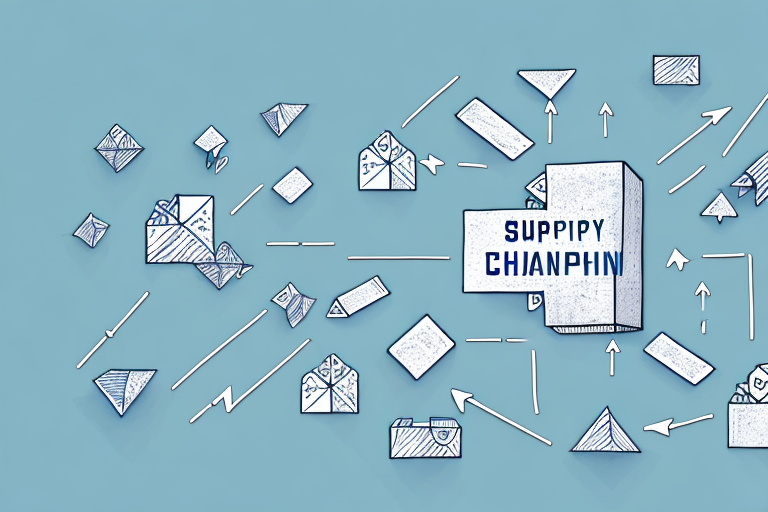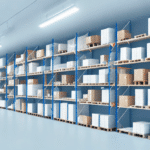Understanding Inside Delivery Fees in Supply Chain Management
In the complex world of supply chain management, businesses are constantly seeking ways to optimize operations and reduce costs. One strategy that has gained traction in recent years is the utilization of inside delivery fees. But what exactly are inside delivery fees, and how do they function within the supply chain? This article delves into the intricacies of inside delivery fees, examining their role in supply chain operations, their advantages and disadvantages, and strategies for determining the appropriate fee for your business.
What is an Inside Delivery Fee?
An inside delivery fee is an additional charge applied to shipping costs to cover the expenses associated with delivering goods to a specific location within a customer's premises. This could involve delivering items to a particular room, floor, or directly into specific equipment. For instance, when shipping large machinery to a factory, a business might impose an inside delivery fee to account for the labor and equipment needed to transport the machinery to its designated spot.
The structure of inside delivery fees can vary. Some businesses opt for a flat fee regardless of the delivery specifics, while others adjust the fee based on the size, weight, or complexity of the delivery. Additionally, higher fees may be charged for deliveries to challenging locations, such as upper floors or areas with restricted access.
Clear communication of inside delivery fees is crucial. Transparently informing customers about these fees upfront can prevent misunderstandings and ensure that both parties are aware of the total shipment costs. Customers should also be informed about any prerequisites or limitations for inside delivery, such as the necessity for a loading dock or specialized moving equipment.
The Role of Inside Delivery Fees in Supply Chain Operations
Inside delivery fees are instrumental in enhancing the efficiency of supply chain operations. By implementing these fees, businesses can adequately compensate for the additional time, labor, and resources required for more intricate deliveries. This ensures that complex deliveries remain financially feasible and do not erode profit margins.
Moreover, inside delivery fees can significantly improve customer satisfaction. Offering the option of inside delivery allows customers greater control over the placement of their goods, fostering trust and encouraging repeat business. According to a Forbes report, enhanced delivery services directly correlate with increased customer loyalty and positive reviews.
Additionally, inside delivery fees contribute to reducing the risk of damage or loss. Delivering items directly inside a premises minimizes exposure to external elements and potential mishandling, thereby decreasing the likelihood of damages and associated costs. This proactive approach not only safeguards the goods but also streamlines the overall supply chain process.
Furthermore, inside delivery fees can align with sustainable business practices. For example, offering incentives for eco-friendly delivery methods, such as lower fees for electric vehicle deliveries, encourages environmentally responsible behavior. This not only reduces the environmental footprint but also enhances the company’s reputation among eco-conscious consumers.
Pros and Cons of Charging Inside Delivery Fees
Advantages:
- Offsets costs associated with complex deliveries
- Enhances the customer experience by offering tailored delivery options
- Provides a scalable way to manage resource allocation for deliveries
- Encourages the adoption of sustainable delivery practices
Disadvantages:
- May deter price-sensitive customers
- Could lead to increased customer support inquiries
- Potentially challenging to justify for small or straightforward deliveries
- Risk of negative perceptions if fees are perceived as excessive
When considering the implementation of inside delivery fees, businesses must weigh these pros and cons. Transparency in fee structure and ensuring that fees are reasonable can mitigate potential negative impacts on customer perception and business reputation.
Determining the Right Inside Delivery Fee for Your Business
Setting an appropriate inside delivery fee involves balancing the need to cover additional costs without deterring customers. A data-driven approach can aid in this determination:
- Analyze Delivery Costs: Assess the average costs associated with inside deliveries, including labor, equipment, and time.
- Benchmark Against Industry Standards: Research what competitors are charging to ensure your fees are competitive.
- Consider Delivery Complexity: Higher fees may be warranted for deliveries requiring specialized handling or equipment.
- Implement Tiered Pricing: Offer multiple levels of inside delivery services at different price points to accommodate varying customer needs.
According to the Supply Chain Digital, businesses that employ a flexible pricing strategy for delivery services tend to experience higher customer satisfaction and operational efficiency.
Clear communication is paramount. Ensure that inside delivery fees are prominently displayed during the purchase process and detailed in any service agreements. Additionally, offering options allows customers to choose the level of service that best fits their needs and budget.
Impact of Inside Delivery Fees on Customer Satisfaction
Customer satisfaction is a cornerstone of successful supply chain management. Inside delivery fees, when implemented thoughtfully, can enhance the customer experience by providing tailored delivery options. Customers appreciate the ability to control where their purchases are placed, which can lead to increased satisfaction and loyalty.
However, excessive or poorly communicated fees can have the opposite effect. Customers may perceive high fees as unfair, leading to dissatisfaction and negative reviews. It is essential to balance the need for additional revenue with the potential impact on customer perception.
Offering a range of delivery options, including standard and inside delivery, allows customers to make informed choices based on their preferences and budget. This flexibility can lead to higher overall satisfaction, as customers feel empowered to select the service that best meets their needs.
Legal Considerations When Charging Inside Delivery Fees
While charging inside delivery fees is generally permissible, businesses must remain vigilant about legal compliance. Transparency is key; all associated fees should be clearly disclosed to customers before the completion of a transaction. Failure to do so may result in legal repercussions or fines as outlined by consumer protection laws.
Moreover, it's important to ensure that delivery fees are non-discriminatory. Charging higher fees based on the delivery location or other unrelated factors could be viewed as discriminatory and may open the business to legal challenges.
Staying informed about state and federal regulations regarding delivery fees can help businesses avoid potential legal pitfalls. Consulting with legal professionals or industry associations can provide guidance on maintaining compliance.
Alternatives to Inside Delivery Fees
While inside delivery fees are effective for certain scenarios, businesses may also consider alternative strategies to manage delivery complexity and costs:
- Curbside Delivery: Delivering items to the curb or loading dock rather than inside premises can reduce costs and simplify the delivery process.
- Third-Party Logistics Providers: Partnering with specialized logistics firms can enhance delivery capabilities without the need for additional in-house resources.
- Scheduled Delivery Times: Offering specific delivery windows can help manage delivery resources more efficiently.
- Subscription-Based Delivery Services: Providing customers with premium delivery options for a recurring fee can generate steady revenue while offering enhanced service.
Each alternative has its own set of advantages and may be more suitable depending on the business model and customer base. Evaluating these options can help businesses determine the most effective approach to delivery management.
Best Practices for Implementing Inside Delivery Fees
To effectively integrate inside delivery fees into your supply chain strategy, consider the following best practices:
- Transparent Communication: Clearly outline all fees during the purchasing process to avoid surprises and build trust.
- Flexible Pricing Structures: Offer multiple delivery options and pricing tiers to cater to diverse customer needs.
- Regularly Review Fees: Periodically assess delivery fees to ensure they remain competitive and reflective of actual costs.
- Monitor Customer Feedback: Collect and analyze customer feedback to identify any issues related to delivery fees and make necessary adjustments.
- Stay Informed on Regulations: Keep abreast of legal requirements related to delivery fees to maintain compliance.
Implementing these practices can help businesses maximize the benefits of inside delivery fees while minimizing potential drawbacks.
Emerging Trends in Inside Delivery Fees
The landscape of supply chain management is continually evolving, and several trends are shaping the future of inside delivery fees:
- Automation and Technology: The use of drones and delivery robots is becoming more prevalent, potentially reducing the need for traditional inside delivery fees.
- Sustainability Initiatives: Businesses are increasingly focusing on eco-friendly delivery options, such as electric vehicles, which may influence the structure of delivery fees.
- Personalization: Advanced data analytics enable more personalized delivery options, allowing businesses to tailor fees based on individual customer preferences and behaviors.
- Integration with E-commerce Platforms: Seamless integration of delivery fee structures within online shopping experiences enhances user convenience and transparency.
Staying ahead of these trends can provide businesses with a competitive edge and ensure that their delivery fee strategies remain relevant and effective.
Conclusion
Inside delivery fees are a valuable tool for businesses aiming to optimize their supply chain operations and enhance customer satisfaction. By carefully assessing the costs, benefits, and customer perceptions associated with these fees, businesses can implement strategies that support both operational efficiency and customer loyalty. As the supply chain industry continues to innovate, staying informed about emerging trends and best practices will be essential for maintaining a competitive advantage.






















